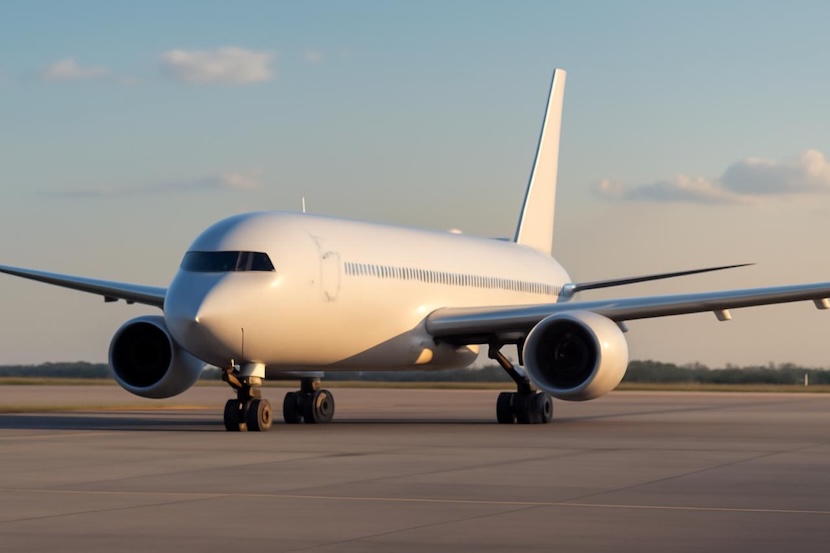US Sky Madness: American Airlines Haul‑OFF More than Two Hundred Flights as Government Impasse Chokes Forty Hubs, More You Need to Know

As the US government shutdown continues to drag on, the impact on air travel has been nothing short of chaotic. American Airlines has already been forced to haul off more than two hundred flights, a move that has left thousands of passengers stranded or scrambling to adjust their travel plans. This disruption is part of a broader problem affecting forty major U.S. hubs, where flight operations are being severely restricted amid this impasse. Airports that handle the majority of U.S. air traffic are now experiencing significant delays and cancellations. The cause of this turmoil? A shutdown-induced staffing crisis at the Federal Aviation Administration (FAA) and other key federal agencies.
With fewer air-traffic controllers and safety workers available, the already overstretched system has struggled to keep up with demand. As tensions rise in Washington, passengers face the harsh realities of a country caught between politics and progress.
Flight Cuts Announced Amid Historic Shutdown
With the federal shutdown now surpassing all previous records, the Federal Aviation Administration (FAA) has ordered airlines to curb domestic flight operations at 40 major airports.
The directive begins with a 4 % reduction in flights — rising to as much as 10 % by about 14 November.
This is not an ordinary schedule tweak. Analysts estimate up to 1,800 flights and 268,000 seats per day could be affected.
In short: the groundwork of U.S. aviation – controllers, scheduling, oversight – is under strain, and airlines are scrambling to react.
Why Are Flights Being Cut? Safety and Staffing in Crisis
At the heart of this disruption is a staffing crisis. Many air‑traffic controllers, TSA officers and other essential federal workers remain unpaid or furloughed as the shutdown drags on.
FAA officials say they must reduce air‑traffic to maintain safe operations, given rising absenteeism and increasing pressure on already lean teams.
Although flying remains safe by official reckoning, the uncertainties are hitting airlines and passengers alike.
Major Airlines Left to Re‑Work Schedules
Among the most affected are American Airlines, United Airlines, Delta Air Lines and Southwest Airlines — all of which have seen large cancellations this week. For example: American has cancelled 221 flights so far, United 184, Delta 173.
In a statement, United’s CEO explained that their “long‑haul international and hub‑to‑hub flights remain largely intact” even as they scale back regional services.
Travel agents report that many carriers are attempting to rebook affected passengers on larger aircraft and fewer flights, and offering full refunds for cancellations.
Airports and Passengers Feeling the Impact
The airports most impacted include hubs in New York, Los Angeles, Chicago, Dallas/Fort Worth, Atlanta, and Washington‑area airports.
At terminals, trips expected to be routine are now the opposite. Many travellers are receiving last‑minute cancellation notices, are unsure whether their flights will depart, or are being told to rebook. The knock‑on effect is longer check‑in lines, increased confusion, and mounting frustration.
Experts warn that even if your flight is not cancelled, you might still experience delays, missed connections or reroutes — because the entire system is running under constrained capacity.
Broader Economic Ripples: Business, Holidays and Confidence
This disruption is arriving just as many business travellers and holiday flyers ramp up their plans. The timing could not be worse. The reduced flight capacity may lead to fare increases, fewer available seats and greater consumer anxiety.
Airlines are also feeling the pinch: cancellations mean lost revenue, customer service burdens and potentially reputational damage if things go wrong. Regulators warn that if the shutdown continues, flight cuts might deepen.
In Washington the budget stalemate between Republicans and Democrats continues with no immediate end in sight — the political impasse is now tangibly impacting everyday travellers.
What Travellers Should Do Right Now
If you have a flight booked in the U.S. in the next few days, do the following:
- Check your airline’s schedule frequently. Flights may be cancelled or shuffled with little notice.
- Know your rights: airlines are offering full refunds if they cancel.
- If your trip is flexible, consider postponing or choosing routes that are less likely to be cut (e.g., long‑haul international flights seem less affected).
- Arrive at the airport earlier than you normally would. With reduced staffing and extra checks, delays are more likely.
- Be prepared for alternative travel: trains, buses or other means may become backups if flights disappear.
- Travel insurance? Now is a good time to check what your policy covers, since this isn’t a weather event but a staffing and regulatory disruption.
Looking Ahead: What to Watch
If the shutdown continues into the deeper weeks of November, the 10 % flight‑cut ceiling may be crossed. FAA officials have floated reductions of 15‑20 % if controller absenteeism doesn’t improve.
With the Thanksgiving travel peak looming, the stakes are even higher. Airlines, airports and travellers all have their fingers crossed for a resolution and a return to normal scheduling.
For now, the message is: expect interruptions, plan ahead, and don’t assume your usual flight experience applies anymore.
Final Thoughts
From the moment you step into the queue to check‑in, to the moment you’re waiting by the gate, this is not just “another flight day” in the U.S. air‑travel system. The shutdown has pulled a thread, and the knot is unraveling. For passengers, this means being extra vigilant. For the system, it’s a warning that even flying — one of humanity’s greatest logistic triumphs — depends on the willingness of the powers‑that‑be to keep the lights on.
Image Credit: American Airlines
The post US Sky Madness: American Airlines Haul‑OFF More than Two Hundred Flights as Government Impasse Chokes Forty Hubs, More You Need to Know appeared first on Travel And Tour World.

